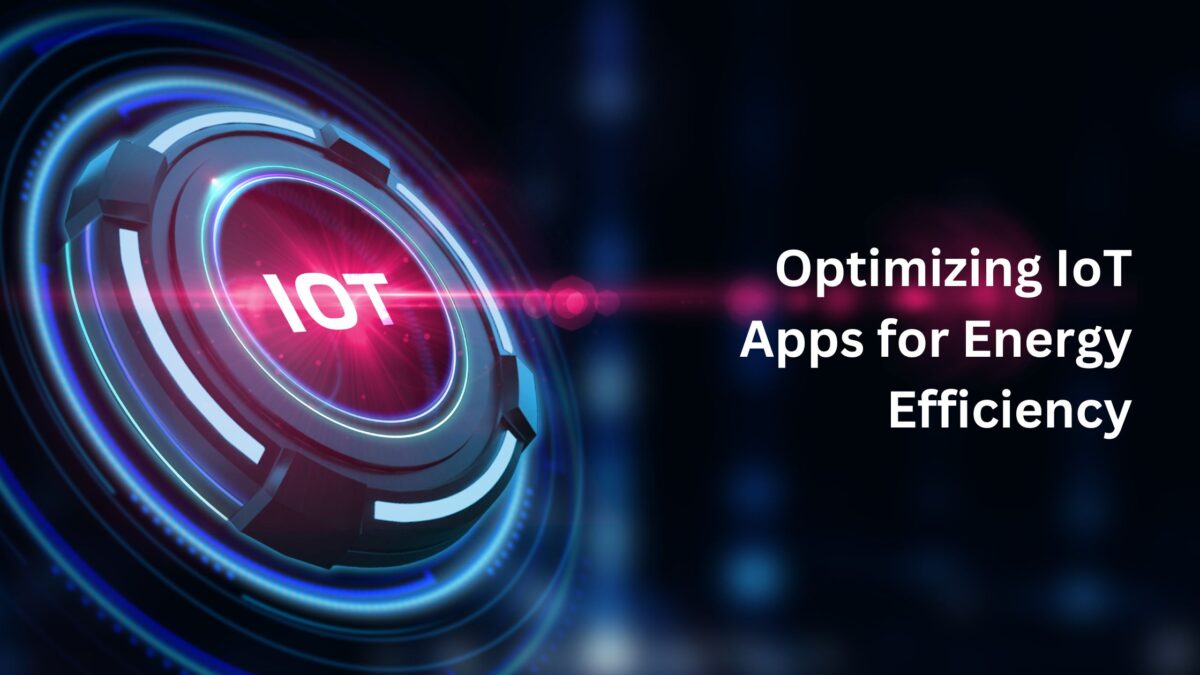The Internet of Things has transformed how we interact with technology and has changed our environment, making it more technically advanced. It has enabled gadgets to communicate and exchange data in real-time by establishing a seamless connection. IoT applications are used in various industries, including healthcare, agriculture, manufacturing, and transportation. The popularity of IoT and its promising capabilities have raised the demand for IoT app development services. Energy efficiency is a significant feature of IoT that demands special attention. This blog will help you understand how optimizing IoT apps for energy efficiency might help to create a more sustainable future.
Improving Sustainability with IoT Sensors
The human brain has achieved so much, from light bulbs to going to the moon. But we can’t deny the importance of a sustainable environment to live peacefully and protect the planet for future generations. Below are some in which sustainability could be improved with IoT sensors:
- IoT Sensors
IoT applications rely primarily on sensors to acquire data from the physical environment. Temperature, humidity, pressure, motion, and other elements are all monitored with these sensors. These sensors are a substantial source of energy consumption in IoT devices. IoT devices can improve sustainability by tracking real-time energy use, emissions, and resource utilization. A reliable IoT app development company can help you build a robust application with inbuilt sensors that will promote the growth of a sustainable environment.
- Power Management
Power management is a critical component in improving energy efficiency in IoT applications.
IoT devices should be designed to sleep most of the time and wake up only when necessary. Choosing energy-efficient microcontrollers and processors can reduce overall power consumption significantly. Energy harvesting methods, such as solar panels or kinetic energy converters, also empower IoT devices.
- Communication Protocols
Communication between IoT devices and the cloud or other devices can consume a lot of energy. It is critical to select the appropriate communication protocols. Using low-power communication protocols such as MQTT-SN, CoAP, or LoRaWAN will help you save energy. Compressing data before transmission and decreasing bandwidth usage can also help in energy savings.
Energy Optimization with IoT Applications
Energy optimization is the process of increasing energy efficiency while decreasing energy waste. It entails developing and implementing strategies for reducing energy use, improving equipment performance, and optimizing energy systems. IoT applications are considered very advanced applications that can help with energy optimization. Let’s understand how IoT is optimizing energy:
- Predictive Analytics
Predictive analytics can be used in IoT systems to predict trends and optimize energy use. Machine learning models can forecast when a device or system will require repair or when energy consumption will surge, allowing for proactive energy optimization.
- Data Processing at Edge
Processing data at the edge, closer to the data source, can reduce the energy consumption of transmitting and processing data in the cloud. Edge computing enables real-time analysis and decision-making, which can be especially useful in crucial applications such as industrial automation and healthcare.
- Smart Grids
In energy efficiency, IoT is critical in developing intelligent grids and improving energy management. IoT sensors and gadgets can help utilities and consumers monitor and optimize their energy consumption in real-time. Smart meters can offer users real-time data on their energy usage, encouraging more effective energy consumption.
- Industrial IoT
Industrial IoT aims to optimize energy utilization in manufacturing and industrial processes. IoT applications in this industry can help automate operations, monitor machinery, and improve factory energy efficiency. This can result in lower energy costs and a lesser carbon footprint.
Conclusion
Energy efficiency is a crucial factor for IoT applications. As the usage of IoT expands in all sectors, optimizing energy consumption is not only environmentally responsible but also economically rewarding. IoT applications can minimize their energy footprint by using energy-efficient sensors, employing power management measures, selecting the correct communication protocols, and utilizing data processing at the edge. Furthermore, using predictive analytics and smart grids can improve energy optimization. As IoT gets popular, the need for IoT app development services has increased in the market. Businesses are looking for reliable partners that can help them grow with IoT. In essence, the Internet of Things has the potential to be a driving force in enhancing sustainability and contributing to a more energy-efficient future.


